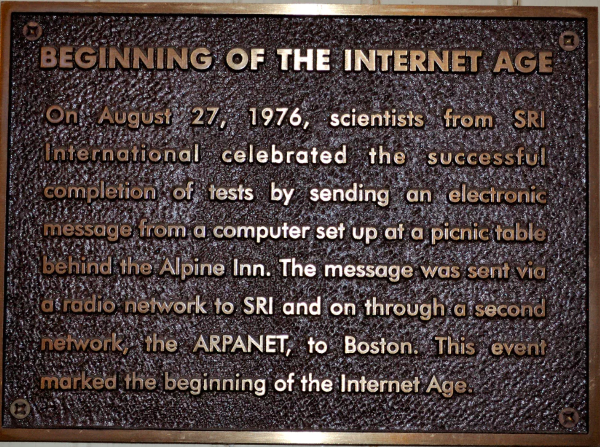Who Invented the Internet?

The internet is both very simple and amazingly complex. What is essentially a web of connected devices that host websites, forums, games and online communities has a massively complicated backbone of technologies, standards and rules behind it. The internet is everywhere and nowhere, both virtual and real. But who invented the internet?
First let us separate the one big confusion that seems to permeate every discussion about the origins of the internet. The internet and the World Wide Web are different things. They were also invented by different people. The World Wide Web was invented by a Brit called Tim Berners-Lee. The internet is a different story entirely.
The internet is a huge interconnected world of networks. The World Wide Web is the medium of sharing information across those networks.

Inventing the internet
The idea of connecting devices to share information is credited to Paul Otlet. A Belgian information expert first had the idea in the 1930s and called it the ‘Radiated Library’. Then, it the early 1960s, J.C.R. Licklider a computer scientist had similar ideas and called it an ‘Intergalactic Computer Network’. He would go on to become director at ARPA, where he would see his idea into fruition.
The internet was invented by a bunch of people from around the world. They came from France’s Cyclades state computer network system, England’s National Physical Laboratory, the University of Hawaii and Xerox. The main mover however was the U.S. Advanced Research Projects Agency or ARPA.
The brief was to build a system that could connect computers to each other and could survive a nuclear war. The intent was to create a web of connections that could either self-heal or had enough redundancy to continue working even if specific sites were taken out by a nuclear strike.
The first network, imaginatively called Arpanet was built in 1969. It linked mainframe computers to several U.S. universities, government agencies and contractors around the country. This first step satisfied one requirement of the project, to create a network of computers but didn’t go far enough. The first transmission from Arpanet was sent from a lab at UCLA and the Stanford Research Institute.
It wasn’t mobile, it was fixed and would not benefit forces in the field or outside the United States. To progress, the program needed to go wireless and be able to connect the wired part to the wireless part. The engineers called this ‘internetworking’.
To get two networks communicating required a universal language that could transport data between machines that didn’t always speak the same language. Two men, Robert Kahn and Vint Cerf came up with a plan which evolved into TCP/IP, which is the transport protocol for the internet.

Internetworking
In 1976, in Rossotti’s beer garden in Silicon Valley, it happened. Several scientists sat around a computer that was connected via cable to a van in the parking lot. The van contained a terminal that took the message from that computer, wrapped it up in TCP/IP and sent it via radio to a repeater on a mountain close by. It then went to Menlo Park where a receiver was waiting. The message was stripped of its TCP/IP wrapper and translated back into computer language and passed to Arpanet.
This was the first ever packet sent across the new internetwork. Later, another destination was added, this time 3,000 miles away in Boston and more messages were sent. Arpanet was a success and the internet was born. Gradually, more nodes were added and information was starting to be shared between them. The network grew until it covered over 800 military installations in more than 70 countries.
The European Organization for Nuclear Research (CERN) began setting up its own version of the system in 1984. Other organizations soon followed, all using the same methodology to connect their networks. Soon, commercial organizations wanted a piece of the action and began creating their own networks. This snowballed until we have the massive web of connections we have today.
Quite how the scientists at ARPA, France’s Cyclades state computer network system, England’s National Physical Laboratory, the University of Hawaii and Xerox all collaborated but each is credited with having a hand in the development of the internet.
What began as a military exercise that proved very effective quickly expanded into the uncontrolled and uncontrollable behemoth we have today. It’s ability to invisibly transfer data and take you to new places has meant that every company and every organization in the world wants to be on the internet. Every person wants to use it and it quickly took on a life of its own.
Internet access is now regarded as a fundamental human right in many countries which shows you just how far it has come since those early days in that beer garden.
















